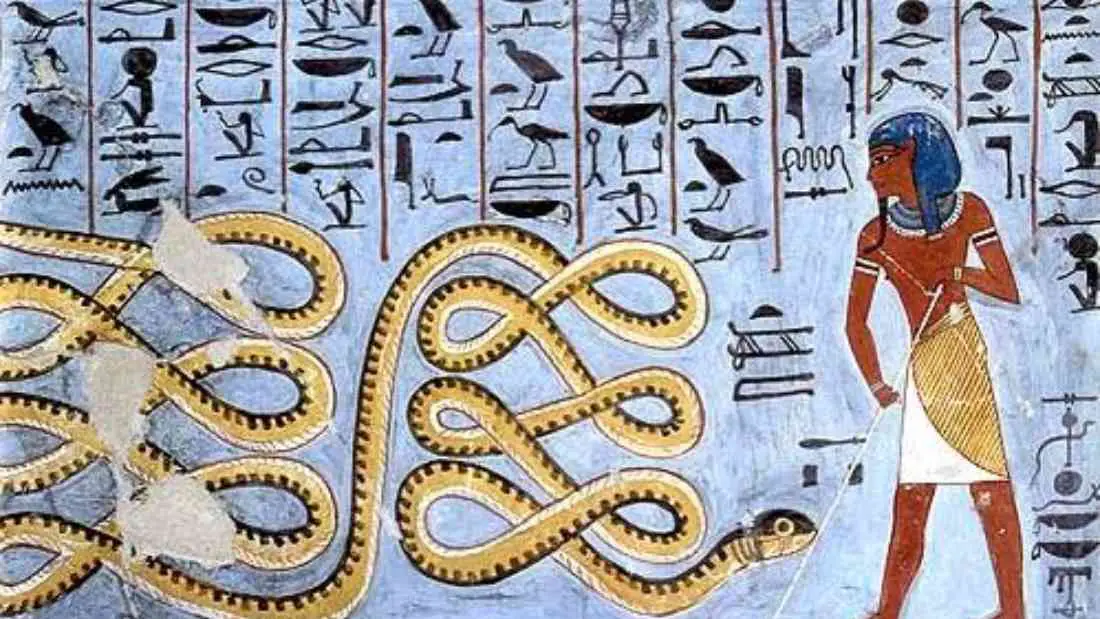The ancient Egyptian god Apep epitomizes chaos and is often depicted as a colossal serpent, slithering in the darkness, seeking to disrupt order and harmony within the cosmos. Apep’s legendary battles with Ra, the sun god, are central to Egyptian myth, symbolizing the eternal struggle between order and chaos, light and darkness.
Through Apep, we gain insight not only into the ancient Egyptian worldview but also into the timeless human fascination with the battle between good and evil.
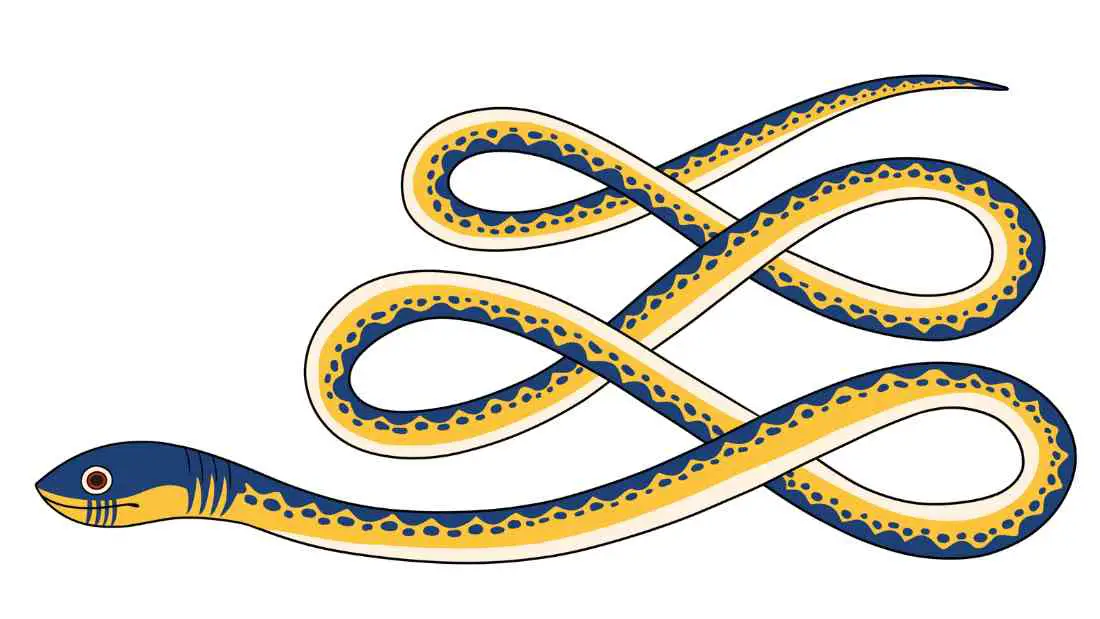
Apep in Egyptian Mythology
Origins and Significance of Apep
The god Apep, also known as Apophis, is believed to have originated in ancient Egyptian religious beliefs dating back to the Old Kingdom period. Unlike other deities in the Egyptian pantheon who were worshipped in temples, Apep was feared and reviled, embodying the antithesis of ma’at, the principle of harmony, truth, and order.
This monstrous serpent was thought to reside in the Duat, the Egyptian underworld, from where it would emerge nightly to battle Ra, the sun god, in his solar barque as he traveled through the underworld to rise again at dawn.
The significance of the god Apep in Egyptian mythology cannot be overstated. Representing chaos, darkness, and evil, Apep was seen as a constant threat to the cosmic order. The battles between Apep and Ra were not just stories; they were symbolic narratives of the daily rebirth of the sun and the triumph of order over chaos, light over darkness.
The defeat of Apep ensured the sun would rise, bringing light, warmth, and life to the world. Thus, Apep was integral to the ancient Egyptian understanding of the universe and the cyclical nature of time and existence.
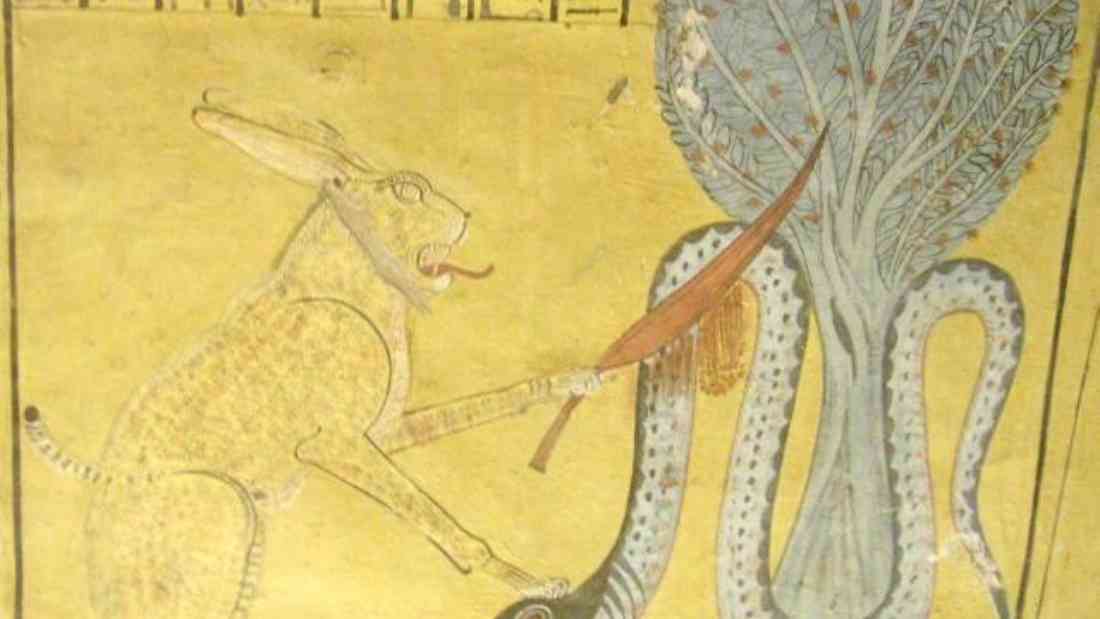
The Depiction of the Egyptian God Apep
The Ancient Egyptian god Apep is depicted in ancient Egyptian art and texts primarily as a gargantuan serpent, embodying the ultimate manifestation of chaos and darkness. This colossal serpent was often illustrated in the act of being defeated or restrained, symbolizing its eternal struggle against Ra and the forces of order.
In some texts and temple reliefs, Apep is shown being speared or sliced by Ra and his protectors, representing the triumph of light over darkness.
Furthermore, Apep was sometimes depicted as being restrained by knots or encircled by fire, symbolizing containment and control over chaos.
These depictions not only highlight the Egyptians’ desire to maintain cosmic order but also underscore the pervasive influence of Apep as a symbol of all-encompassing evil that must continuously be overcome.

Confronting Apep: Narratives of Ra’s Battles with Apep
The narratives of Ra’s nightly battles against Apep are among the most captivating and symbolically rich accounts within Egyptian mythology. Every night, as Ra’s solar barque made its perilous voyage through the Duat, the underworld, it was ambushed by Apep.
The monstrous serpent used its massive frame to attempt to ensnare and swallow the sun barque, aiming to plunge the world into eternal darkness. These encounters were not mere physical confrontations but were laden with deep symbolic significance.
Ra, representing light, order, and life, was not alone in his struggle. Accompanied by a cohort of gods and goddesses, his defenders wielded magical spells and weapons to protect the sun barque from Apep’s onslaughts. The support of these deities symbolizes the collective effort required to maintain Ma’at, the principle of cosmic harmony, against the forces of disorder.
The defeat of Apep each night and the subsequent rise of the sun represented the triumph of order over chaos, light over darkness, and life over death. This cycle of battle and victory was not only a daily occurrence but also an essential aspect of the cosmic order, reinforcing the Egyptians’ beliefs in the stability of the universe and the necessity of eternal vigilance against chaos.
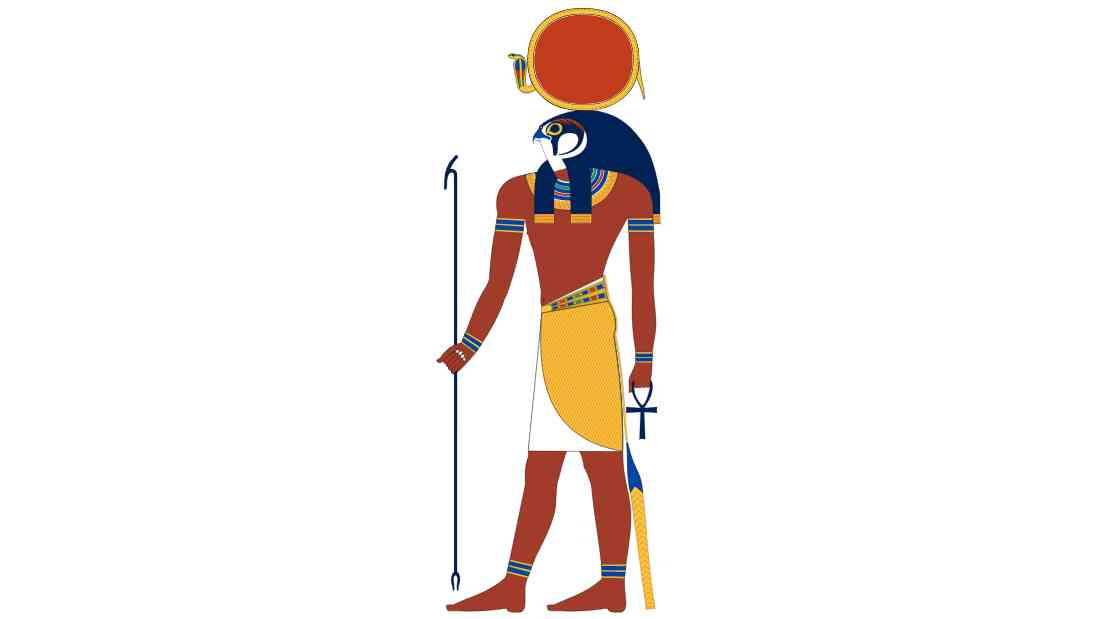
Ancient Practices for Protection Against Apep
The fear and reverence of Apep prompted the ancient Egyptians to develop a suite of rituals and practices aimed at protecting themselves and the cosmos from the chaos serpent’s malevolent influence.
Central to these practices was the use of magic, which the Egyptians believed to be a potent force against Apep’s disruptions. Priests and practitioners would perform nightly rituals that involved recitations of magical spells, particularly from the “Book of Overthrowing Apep.” This text contained powerful incantations, spells, and rituals designed specifically to weaken Apep and safeguard Ra’s journey across the night sky.
Furthermore, amulets and talismans depicting symbols of protection, such as the Eye of Horus, were commonly worn by individuals to ward off the evil and chaos represented by Apep. These protective charms were believed to harness magic that could shield the wearer from harm and ensure physical and spiritual health.
Another significant ritual was the ceremonial “overthrowing” of Apep, enacted in temples across Egypt. This ritual involved the creation of effigies of Apep, which were then subjected to symbolic acts of violence, such as being trampled, stabbed, or burnt.
These acts were not mere expressions of contempt for the evil god Apep but were imbued with deep ritualistic significance, embodying the defeat of chaos and the reinforcement of cosmic order.
Through these rituals, magical practices, and symbolic acts, the ancient Egyptians sought not only to protect the cosmos and ensure the daily rebirth of the sun but also to affirm their individual and collective resilience against the forces of chaos embodied by Apep.
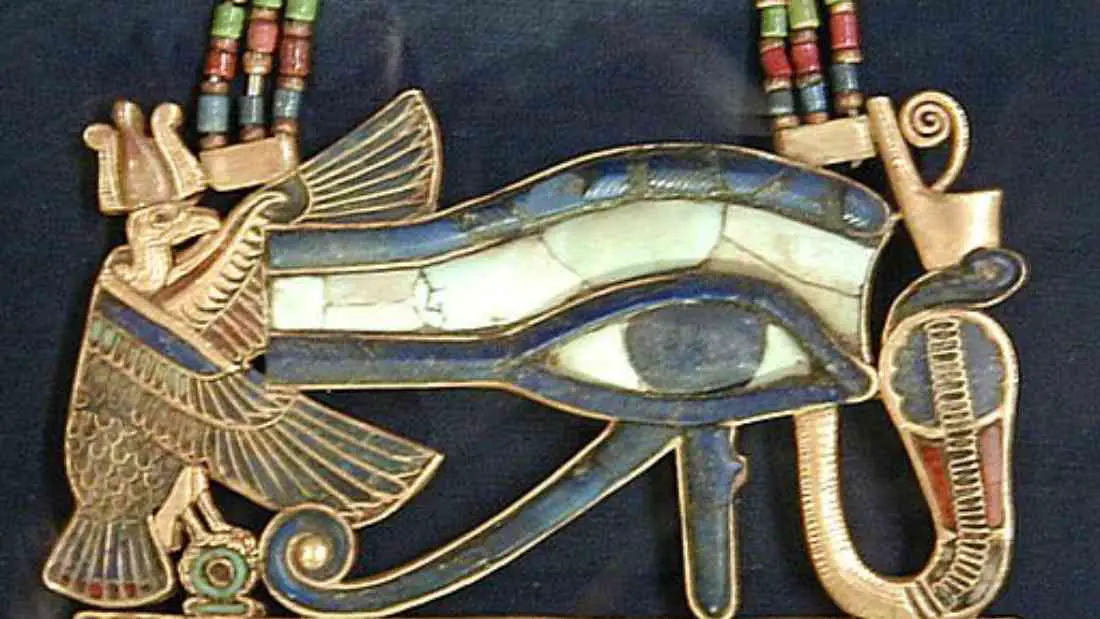
Concluding Thoughts on the Ancient Egyptian God Apep
The myth of the god Apep, entwined with the fabric of ancient Egyptian culture, showcases the civilization’s intricate beliefs about the balance between order and chaos.
Apep, as the eternal antagonist against Ra and the embodiment of all that is chaotic and evil, played a pivotal role in the mythology, representing not only the direct threat to cosmic order but also the internal and societal struggles against disorder.
The rituals, deities, and narratives focusing on the battle between Apep and Ra illuminate the Egyptians’ deep-seated ideologies and their attempts to maintain ma’at, the foundational principle of harmony and balance.
Through the examination of Apep’s role in Egyptian mythology, one can discern the universal themes of light versus darkness, order versus chaos, and the perennial struggle of good against evil, themes that continue to resonate through the ages.
Posts About the Egyptian Pantheon of Gods
The Pantheon of Ancient Egyptian Gods – A Comprehensive Guide
The Wrath of Montu – The Mythology of the Egyptian War God
Egyptian God Ammit – The Eater of Hearts in Ancient Egyptian Mythology
The Nightly Journey of Khonsu – The Ancient Egyptian God of the Moon
Ihy – The Joyful Ancient Egyptian God of Music
Min – The Ancient Egyptian God of Fertility
The Egyptian God Anubis – His Evolution from Son of Ra to Protector of the Dead
Unraveling the Mysteries of Babi – The Ancient Egyptian Baboon God
Ra, the Egyptian Sun God – Symbolism and Significance in Ancient Egyptian Culture
Sobek: The Ferocious Crocodile God of Ancient Egypt
The Enigmatic Mythology of Horus, the Egyptian Sky God
The Egyptian God Set – Protector of the Desert and Lord of Conflict
The Ancient Egyptian God Medjed: The Guardian of Osiris and the Afterlife
Anput, the Wife and Female Version of Anubis
Selket – The Scorpion Crowned Egyptian Goddess
Shu – The Egyptian God of Air, Wind, Peace and Lions
Hapi the Androgynous Ancient Egyptian God of the Nile
The Egyptian Sky Goddess Nut: Myth and Symbolism
The 42 Laws of Maat: The Moral Principles of the Ancient Egyptians
The Ancient Egyptian Goddess Mut: The Maternal Power in Egyptian Mythology
The Warrior Goddess: Neith in Ancient Egyptian Mythology
The God Bes: The Joyful Dwarf Deity in Ancient Egyptian Culture
The Egyptian Gods of Love: Hathor and Isis in Ancient Egyptian Mythology
Confronting the Serpent: The God Apep, the Nemesis of Ra in Egyptian Myth

